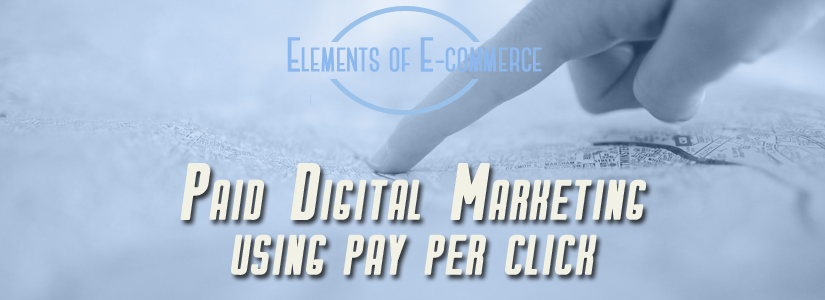
Elements of E-Commerce | Paid Digital Marketing: Using Pay Per Click
Welcome to Thanx Media’s “Elements of E-Commerce” blog series. Follow along as we wade through the nuts and bolts of e-commerce technologies that you need to know.
What is Pay Per Click Marketing?
It’s probably what you think it is: Pay Per Click (PPC) Marketing is advertising paid based on the number of times an ad is clicked. You see PPC ads every time you use a search engine like Google; they are the sponsored ads that show up above or next to non-paid, organic search results.
How do you set up PPC ads and how much do they cost? As an advertiser, you will actually bid the amount you want to pay per click. You choose search terms and phrases that you want to lead to your ad, and you bid higher to show up at the top of the search result list—sort of. A Quality Score, a measure of how relevant a website is to the search terms, also decides who will show up first. The better your Quality Score the lower your PPC bid may have to be to get top placement. Seems simple enough, right?
But paying for every semi-interested click can blow your budget pretty quickly. So is PPC actually useful? Only if you have a plan.
How to Plan a Pay Per Click Marketing Campaign
1. Set your goals and your budget. Think about what you want to get out of your ad campaign: are you trying to reach a broad, general audience or do you want to be more visible to your key buyers? Link your PPC plan to a specific goal—maybe a holiday sale or highlighting a specific product. Think about the sales value of the bigger and smaller audiences when setting your budget. What is the likely profit from a sale in response to the particular ad? And remember that a bigger audience may mean more clicks, but not necessarily more sales.
2. Research and pick your keywords wisely. Find terms that are the most relevant to your sales, look at the searches that lead to your competition, and think about how often keywords show up in searches. Think about using a “long-tail” strategy: bid on highly specific search terms that will capture a niche audience. More specific, less used terms may be good values!
⋅ Plan negative keywords too. Focus your campaign by making sure you don’t end up in searches that won’t work for you.
3. Write good copy and test different options. Your ad needs to be relevant and specific to the search terms—the search terms should probably be part of your ad, but it also needs to catch attention. Don’t be too generic. Most search engines will let you run split tests so that you can try different options to help you form the best campaign.
⋅ Relevance goes beyond the ad—make sure your ad link is relevant too. When a searcher clicks on your ad make sure they aren’t just headed to your homepage. Take them somewhere relevant that will keep their search moving.
⋅ Don’t forget to optimize for mobile. This is important to your audience and your Quality Score.
4. Run your campaign and keep track of conversions. Keep track of who is clicking, including from what device, using which terms, at what time, and in what location. Keep track of the value of these clicks, both in terms of immediate sales and long-term customer value.
5. Reasses, Rebudget, and Remarket. Regularly revisiting which search terms offer the highest value for your goals is a must. Use your budget wisely and reallocate funds toward the terms that are most relevant—these may change over time. And use search engine tools that let you create lists of people who have already visited your site and similar audience lists.
It can seem like a lot, but having a strong plan is the key to your PPC campaign. If you need help sorting through what works best for your industry, team and budget get in touch and let us help.

